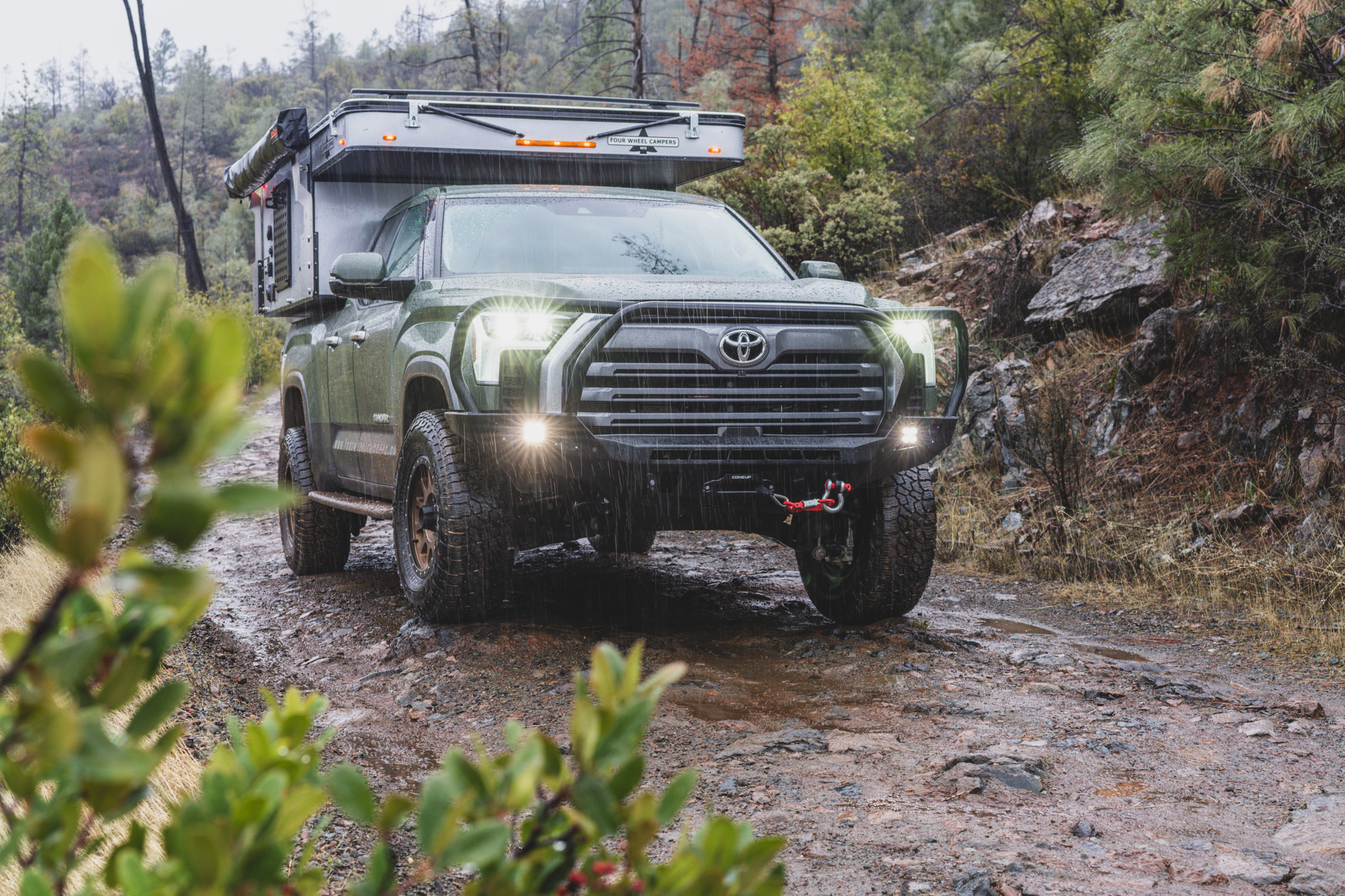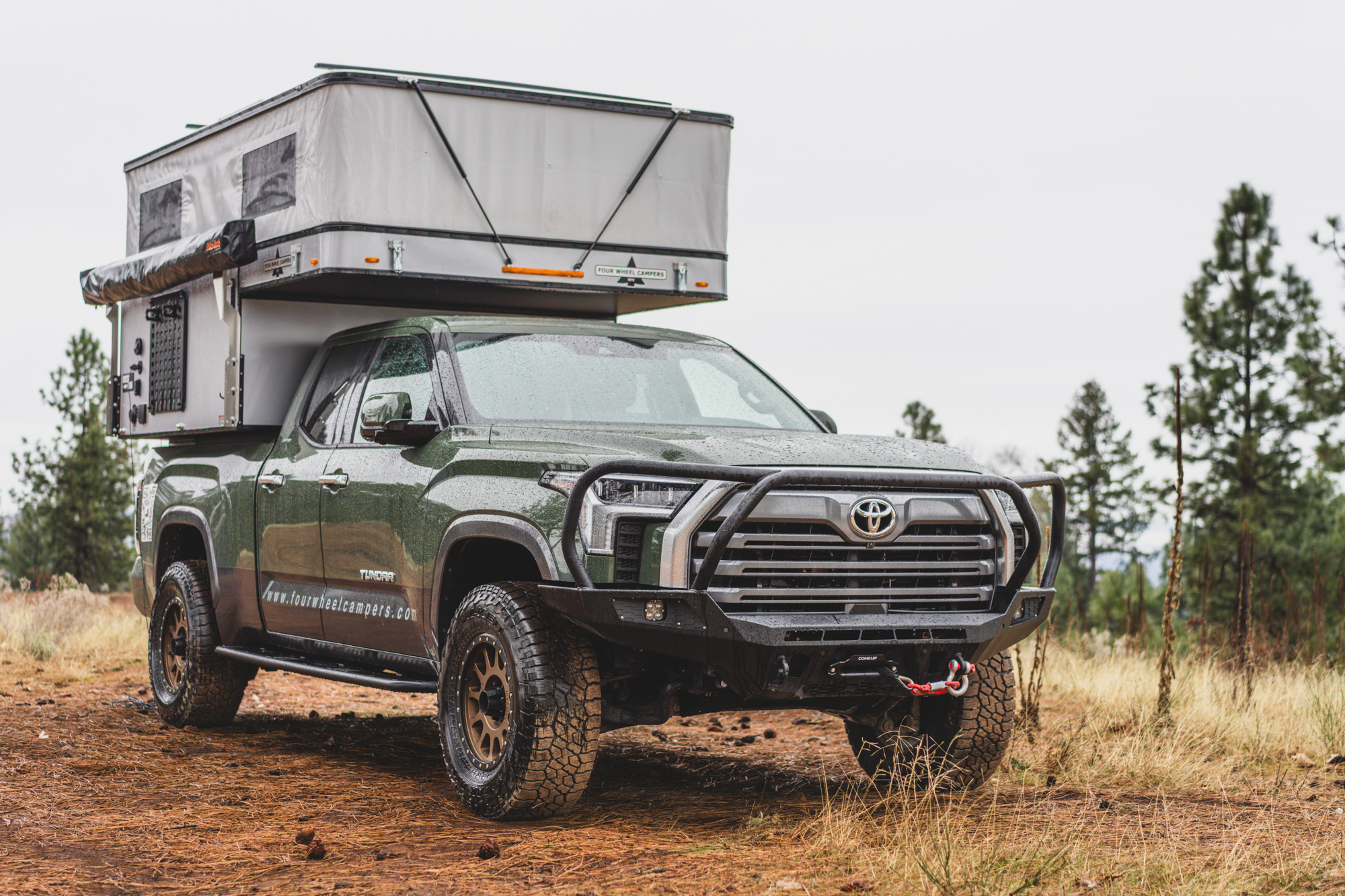This 36 Hours of Adventure is brought to you by Four Wheel Campers CampOut
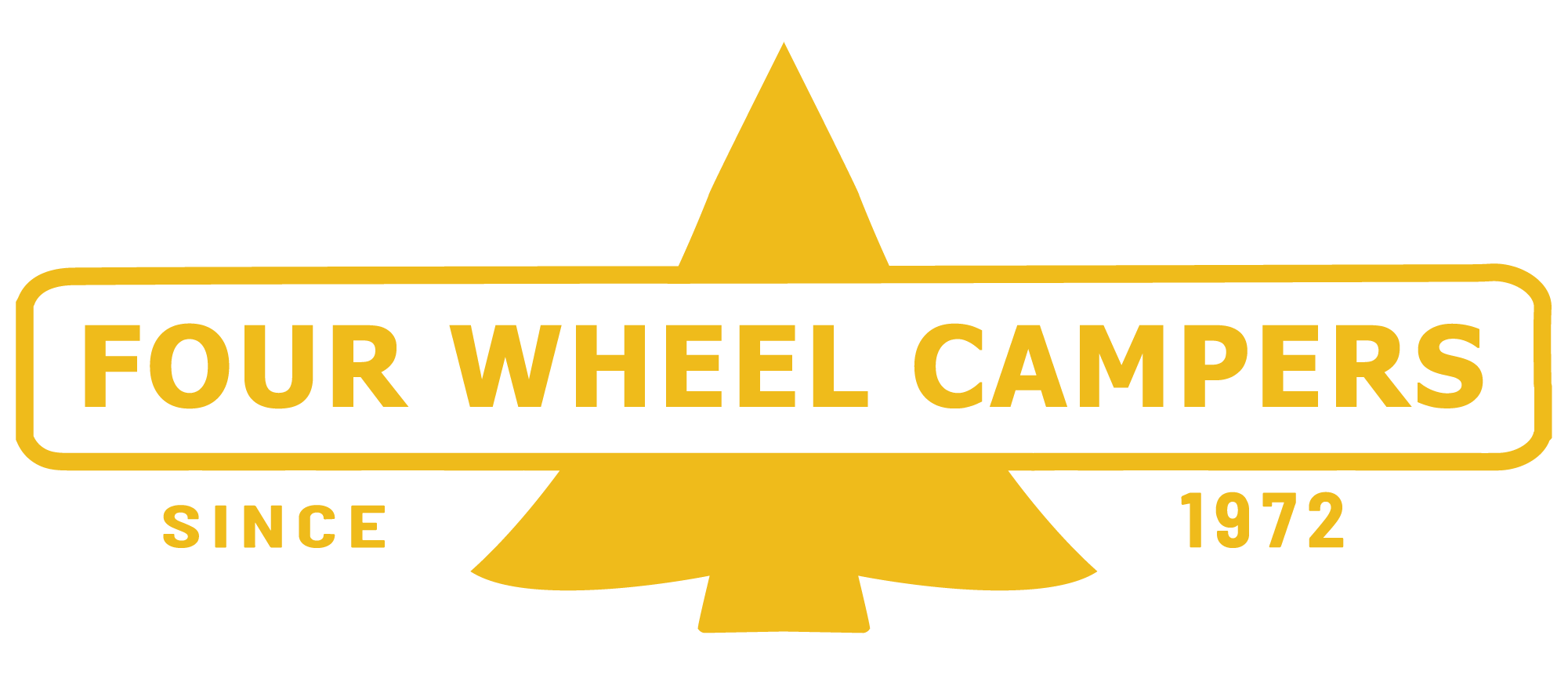
Early memories are so formative, often defining and informing the path of our lives. One of my early memories was camping in my dad’s 1970 Ford truck with a Four Wheel Campers Keystone in the bed. I still remember the color of the wood paneling and the texture of the cushions. My dad taught me the importance of doing what you love with the people you love. In that memory, it was a campout, so with great nostalgia and affection for the FWC brand, this is my most recent adventure, using their newly released CampOut model.
California had been ablaze when I landed in San Francisco, and even the Sierras to the east were also pockmarked with wildfires. A thick smoke settled against the foothills, but the threat of rain and flooding was on the forecast. My first stop was the Four Wheel Campers facility in Woodland, a much larger and more modern manufacturing operation than when my dad collected his Grandby in the 1980s. I was there to pick up the prototype Four Wheel Campers CampOut six-foot model on a new Toyota Tundra.
The first hour included a tour of the facility, abuzz with activity producing over a dozen models, all in multiple widths and lengths. It was impressive to see the modernization of the production process, which included CNC routers, welders, and more. Seeing all the campers stacked on racks ready for delivery to fellow adventurers was a thrill.
After the tour, I went to the back lot and got my first look at the new CampOut, a six-foot model installed on a new Tundra xtra-cab. The model was immediately recognizable as a Four Wheel Campers but thoroughly modernized with composite siding, an updated color, and a unique modular layout. Also impressive is the base price, coming in at $25,599 for five- and six-foot units (eight-foot models are a bit more). Their team handed me the keys, and I opened up onX and plugged the Bottle Hill Trail near Georgetown and the foothills of the Sierras.
Fortunately, it was early enough in the day to miss the Sacramento traffic, and I was shifting into 4Low before most Bay Area residents hit the freeway. Despite how crowded California can seem, there are still ways to escape from the crowds, and the forests around Georgetown are no exception. The trail started with a narrow bridge over Illinois Creek and a steep set of switchbacks towards Bottle Hill. The Tundra managed the camper’s weight well, the camper well matched to the Toyota’s payload. I also like how FWC mounts their campers to the bed, using the body mounts to secure the CampOut to the frame. They never rattle. Swaying, sliding, or shifting, which is common with other campers, is completely absent.
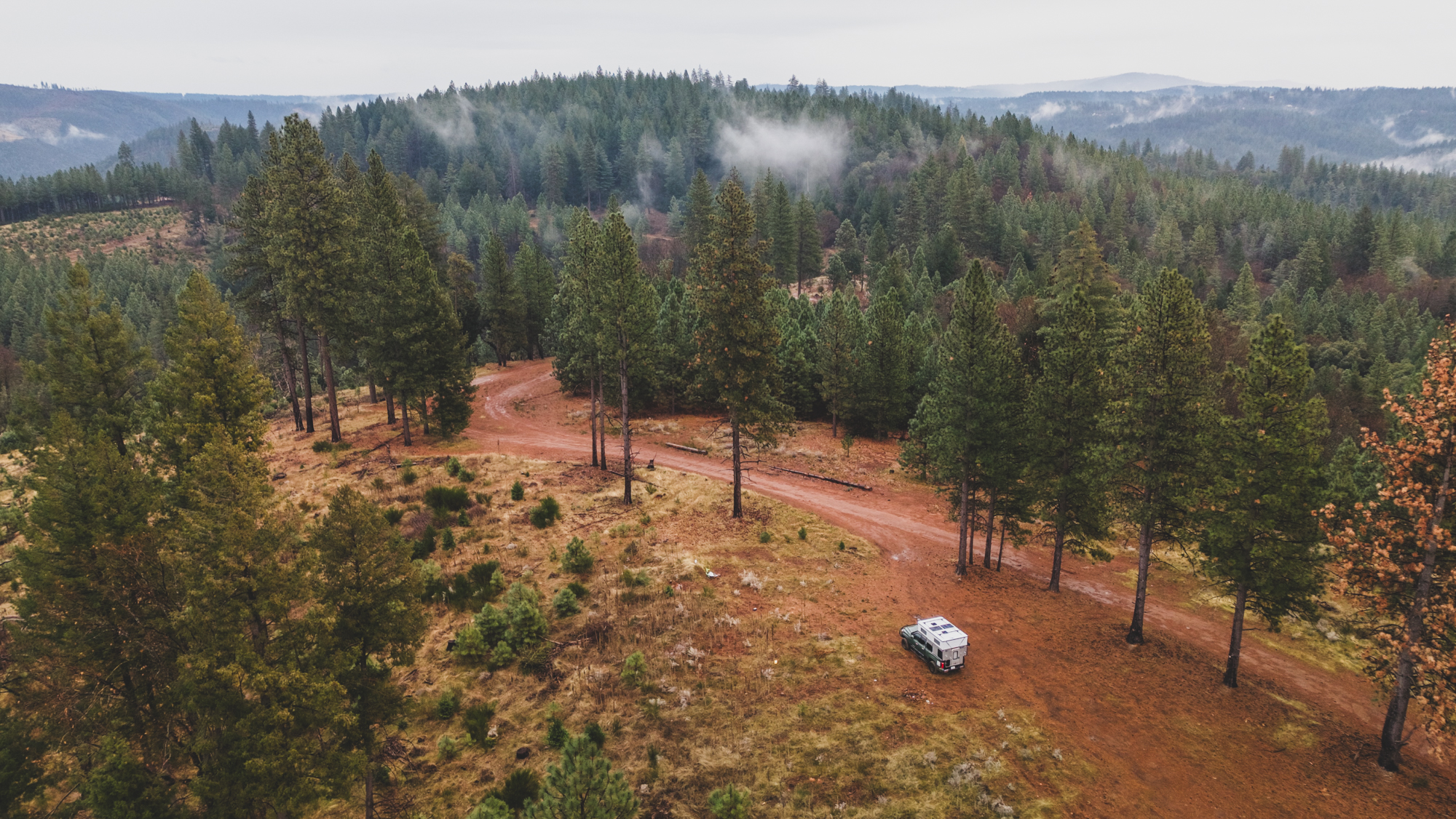
Arriving at the high point of the track, I found a nice clearing and campsite to position the truck on level ground, the low hills transitioning to larger peaks to the east. Just as I leveled the Tundra, the sun dipped below the horizon, and I was rewarded with a beautiful sunset, illuminating the storm clouds heading my way.
Popping up the CampOut required undoing six exterior latches and a press-up on the roof with a shoulder. Here, the twin vent fans are a win, as I switched their direction to force air into the camper to lift the roof quickly (it works equally well as an exhaust fan for lowering the top and pulling the fabric walls inward to prevent bunching or pinching of the material). Once fully deployed, the interior space was evident, as was the modern layout and materials. The metal framework is powder-coated with generous storage and warm wood counters. It felt cozy, which was fortunate, as I was about to be hit with the full force of the Pineapple Express.
My phone alerted me to the possibility of flooding and days of rain, so I settled in by setting the temperature on the Truma heater to 74F and getting comfortable. It was clear that FWC was thinking about the remote worker when they designed the camper, as it even has a native plug for the StarLink Mini, powered on and off by a switch on the electrical panel. The dinette is big enough for two, with a bamboo table that swings and rotates to accommodate eating or working. I set up my laptop and ate sushi while listening to the first raindrops dance across the roof.
There is something about falling asleep with the sounds of nature interrupting the silence, the cool temps, and the comfortable bed lulling me into a great night of rest. Throughout the night, the heater would cycle on and off, keeping it comfortable, aided by the optional winter pack walls that provide additional insulation for the fabric sides- the difference is noticeable with the soft-touch quilted layer creating an additional thermal barrier to the cold Sierra air.
The rain never stopped all night, yet I woke to a dry bed and camper interior. I could not find a single leak, which is impressive given the fabric sides and this being a prototype camper. The heater never faltered, and I was glad two propane tanks were in the storage locker. I started coffee on the Dometic stovetop and eased into a morning of writing, photo editing, and catching up on emails- certainly, the rain would let up soon?
At about 1 pm, the rain finally stopped, and I tossed up the drone for a look around and to capture a few photos. Lofting a drone in these conditions is always risky, as the rain can return at any moment. The content gods shined down on me for about 15 minutes before I could hear the pitter-patter of drops on the roof again. I was lucky and captured a few clips and stills before the drone got too wet—time for another hot coffee and to devise a plan of getting out of there.
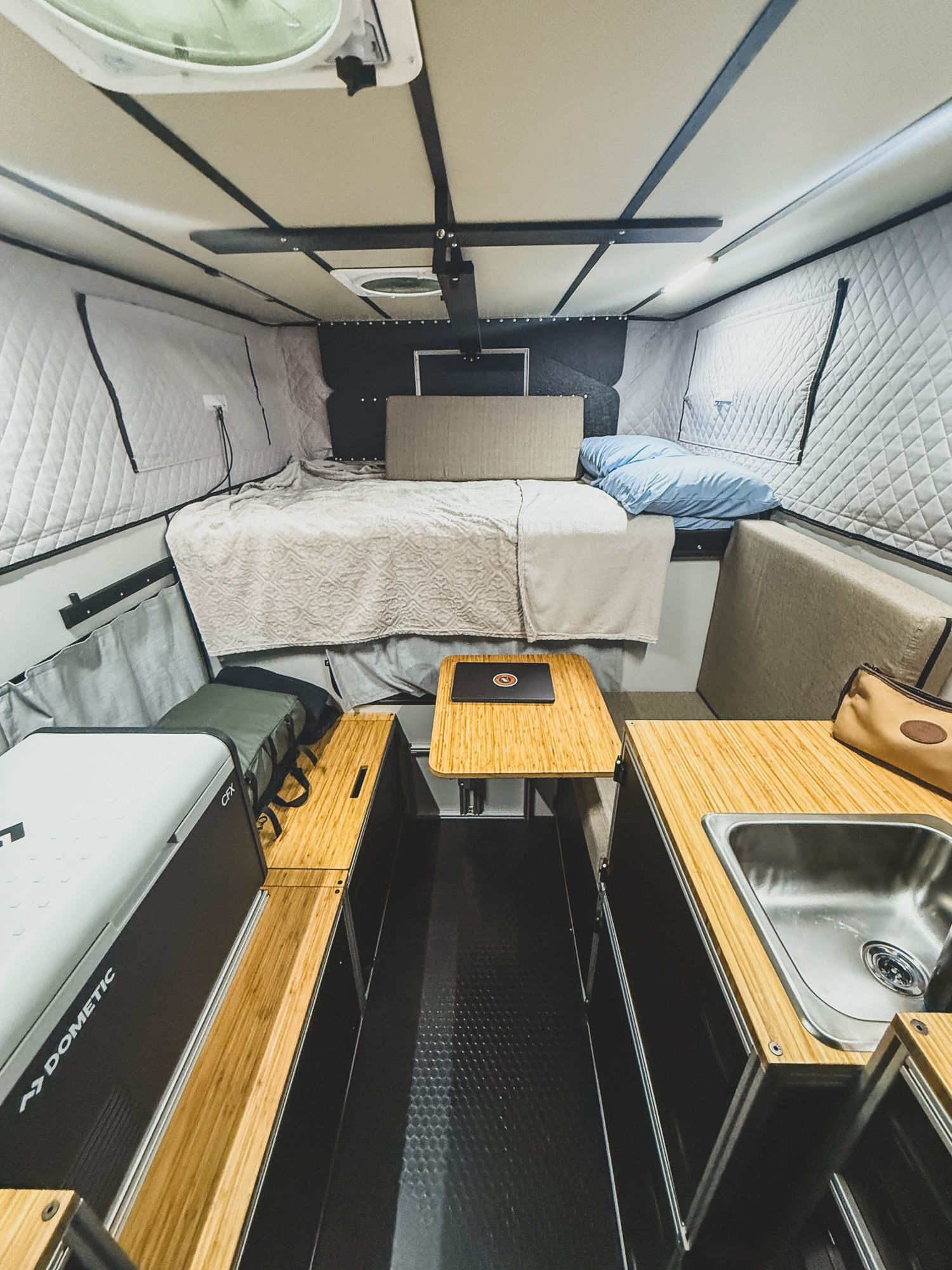
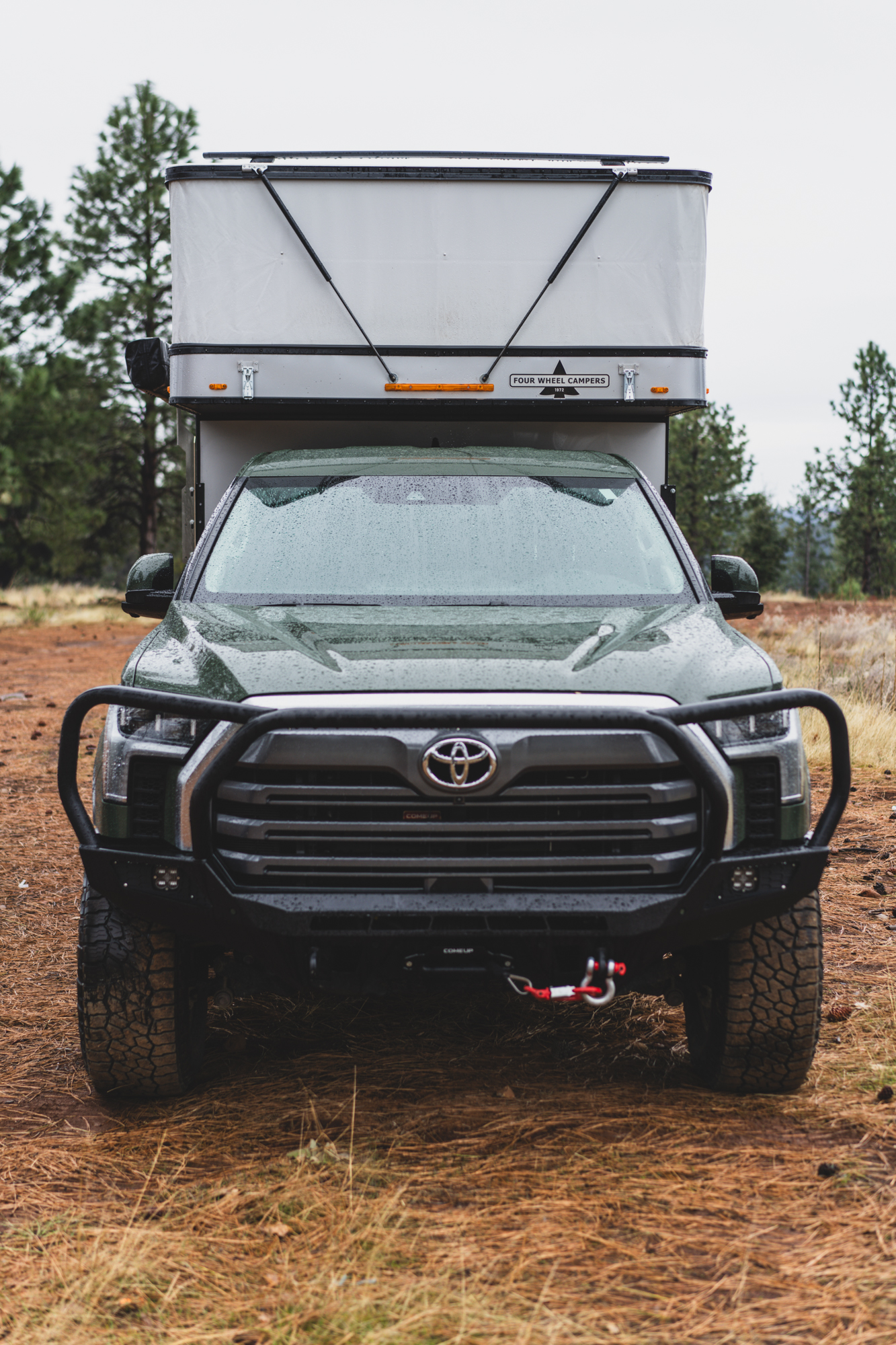
After pulling up the weather radar, it was clear that the rain wouldn’t stop…for days. So I decided to abandon camp and slowly traverse the last 10 miles of trail to the pavement. Fortunately, the camper stows easily and after a quick walkaround inspection (traveler tip: Never drive away from a campsite without a walkaround inspection of the vehicle and camper. Check the latches, look for leaks, and give a peek under the vehicle for failures. Is the Starlink still on the roof, and does it need to be stowed?)
As I walked around the vehicle, the air was thick with petrichor, the earth rewarding my senses after such a long drought. I hopped in the Tundra and fired the engine to life. I was far from the trail’s end, and the Pineapple Express wasn’t done with me yet. Proceeding in a low range at a slow pace, I tested the trail for how soft the conditions were and was grateful to find that it was mostly solid. There were only a few low spots where the water had pooled, and ruts had formed from previous vehicles. The Tundra lumbered along, and I watched for low-hanging branches. The one significant benefit of a pop-top camper is a much lower overall height in the backcountry.
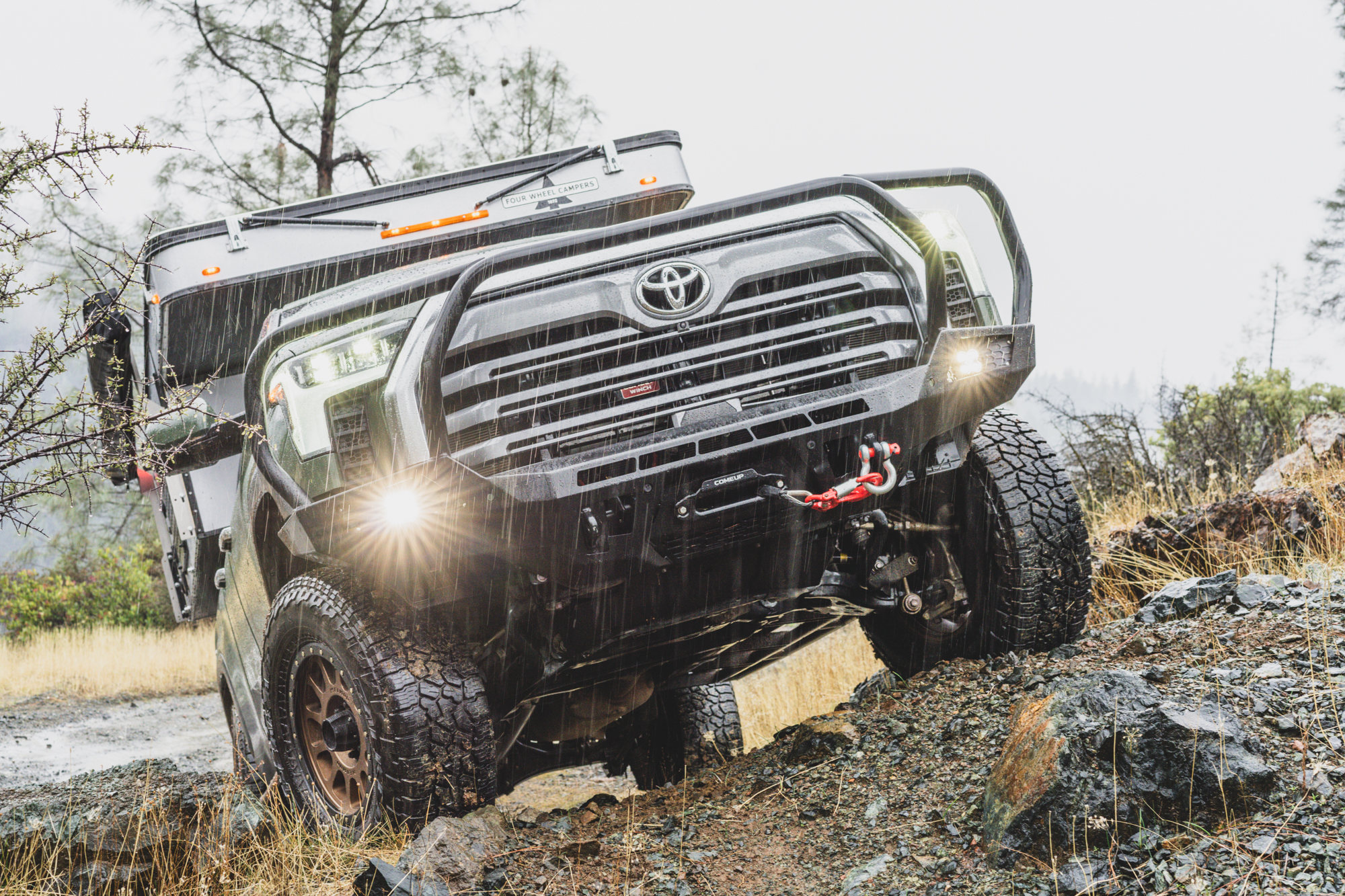
There were a few notable obstacles and some challenging side tracks. Still, the Toyota and the Four Wheel Campers CampOut overcame every one, never spinning a tire and giving me confidence as a driver to continue onward. While navigating the last few miles of track, I thought about those camping trips with my dad in the old Ford with the Four Wheel Campers Grandby fitted to the back. That is exactly what a CampOut is all about: Doing the things we love with the people we love.
For more information on the CampOut: fourwheelcampers.com
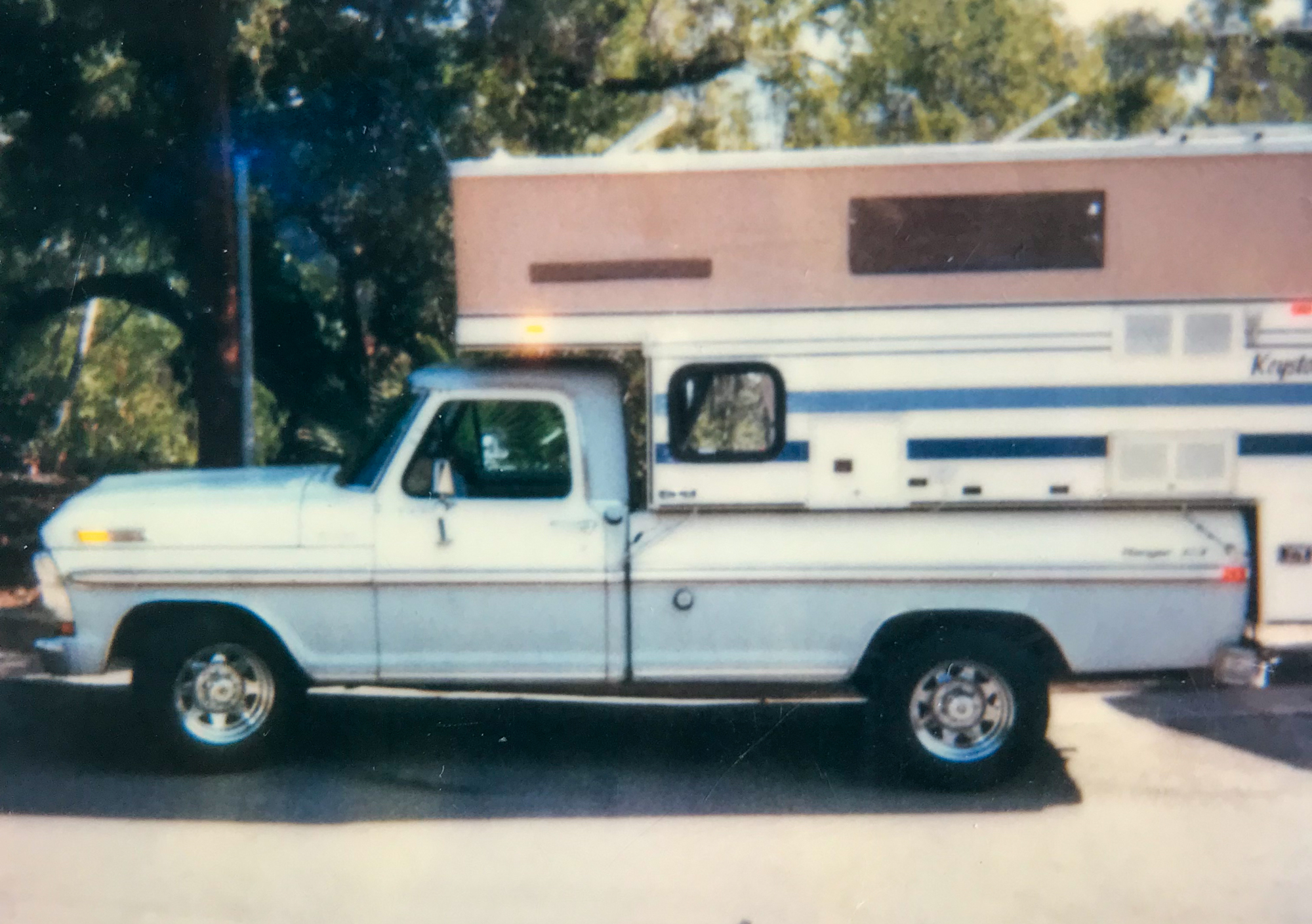
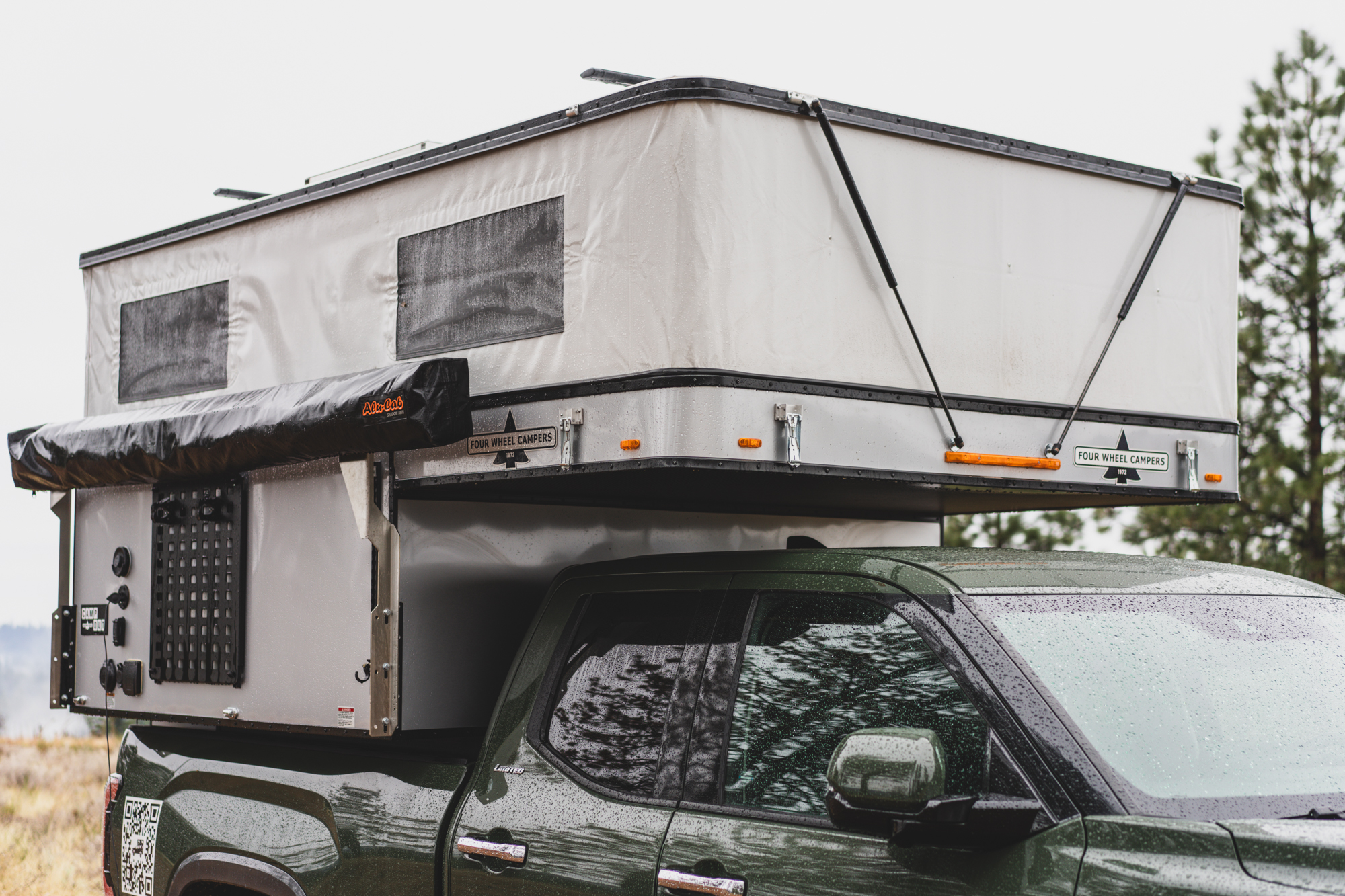
The new CampOut has come a long way from the Keystone that my dad fitted to the family Ford.
